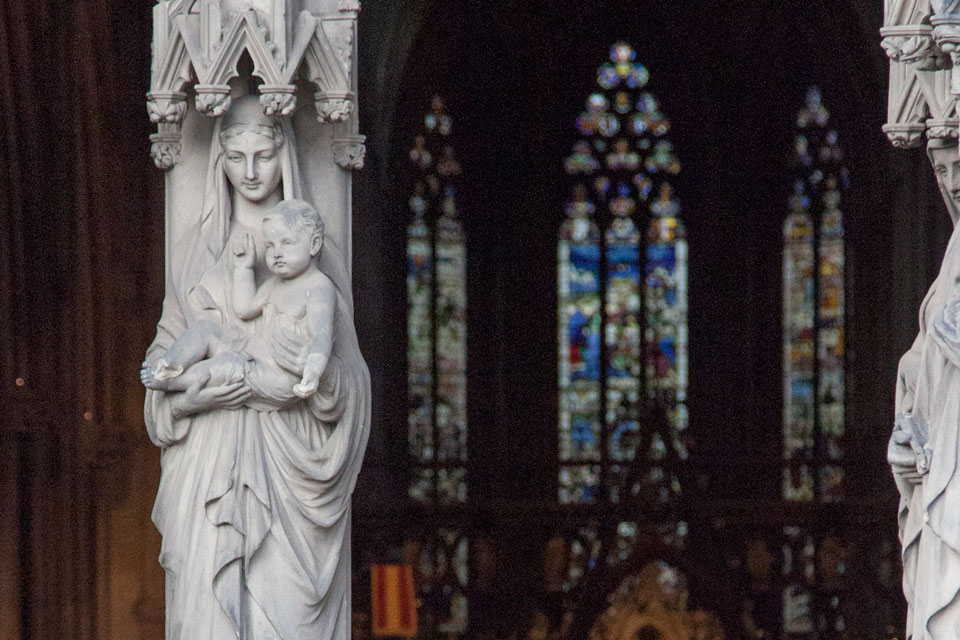
In the early part of the fifth century, a debate raged in the Christian church about the appropriate title for Mary: should she be known as theotokos the God-bearer or as Christotokos the Christ-bearer. You might not instantly recognize this as one of lifes pressing questions but at the time it was not only a debate that all sorts of people got involved in, but was regarded by the Early Church as a fundamental question about who was born in Bethlehem the eternal God, or the person Christ. Whichever side of the debate people found themselves on (and eventually the title theotokos was deemed to be orthodox) they recognized that Mary has a major role in the Christian story.
For centuries the church has held Mary up as an impossible role model for women: the virgin mother whose obedience and purity has been much celebrated. But for most of us, men or women, those arent footsteps in which we can follow. Marys role is unique; she alone is the God-bearer, the most highly favoured Lady. But of course everyones particular vocation is unique. Marys calling to be the mother of her Christ might have been for her alone, but her invitation to say yes to God is the same as the calling we each receive. Mary, the Mother of Jesus, is also in Lukes Gospel the first disciple. After Zechariah has been silenced, it is Mary who takes centre stage in the telling of the Good News. It is Mary whose song of praise to God prologues the major themes of the Gospel as she foretells not only the Kingdom that Jesus will establish, but also the Gospel narrative.
The Magnificat is the longest set of words spoken by a woman in the New Testament. It echoes the words of Hannah (1 Samuel 2: 1-10) and is a profound recognition of the transforming power of God. It is just possible, that along with domesticating Mary into a model of passive obedience, we have domesticated the challenging and destablising words she proclaims. There have been times and places where the Magnificat was regarded as sufficiently dangerous or revolutionary that the reading of it was prohibited. During the British rule of India, theMagnificatwas banned from being sung in church. In the 1980s, Guatemalas government regarded Marys words about Gods preferential love for the poor to be too dangerous and revolutionary to ever be read in public. And when the Mothers of the Plaza de Mayo - whose children all disappeared during the Dirty War -placed the Magnificats words on posters throughout the capital plaza in Argentina, the military junta outlawed any public telling of Marys song.
This trouble maker, this woman with such insight into what Jesus coming into the world really means is someone whose footsteps I might dare to try and follow in. Mary hears and obeys the word of God. It is through her that we learn what it is to be a disciple. Luke describes Mary as a woman of faith, overshadowed by the Spirit at Jesus' conception and again at the beginning of the Church at Pentecost. She is the first to respond to the glad tidings, to hear the word of God and join in with Gods plan for salvation. And indeed it is Marys response to God, rather than her specific role as mother, that Luke celebrates.
"While he [Jesus] was saying this, a woman in the crowd raised her voice and said to him, 'Blessed is the womb that bore you and the breasts that nursed you!' But he said, 'Blessed rather are those who hear the word of God and obey it!'" (Luke 11:27-28).
Do not bless Mary because she gave birth to Jesus, but bless her because she is a faithful and obedient woman of God. She took a huge risk in saying yes to God, she received the call to join in with the way in which God was making His Good News known and she responded. She understood that the coming of Christ would turn the world upside down and she still embraced it. The advent journey, walking with those who prepare the way for the coming of Christ, is our invitation to listen to Gods call and to pray that we, like Mary, have the courage and creativity to say let it be with me, according to your word.
Dr Lindsey Hall
Director of Vocations
Photo: Mary & Child at the West door of Lichfield Cathedral